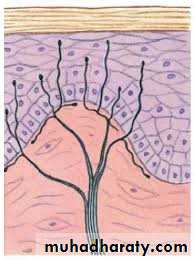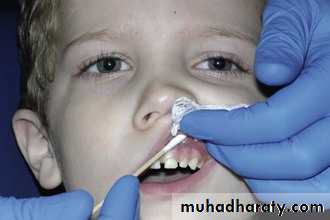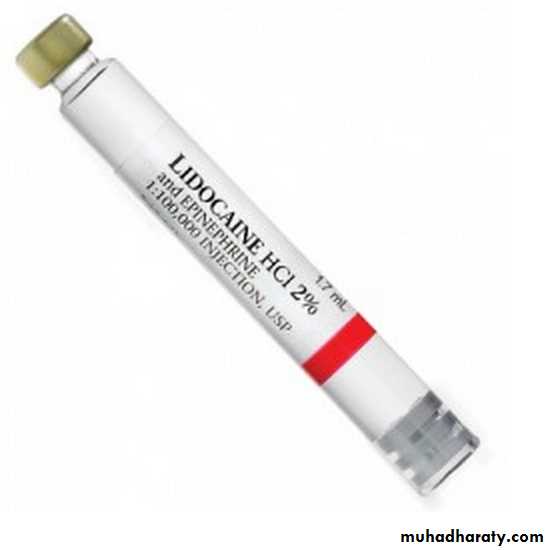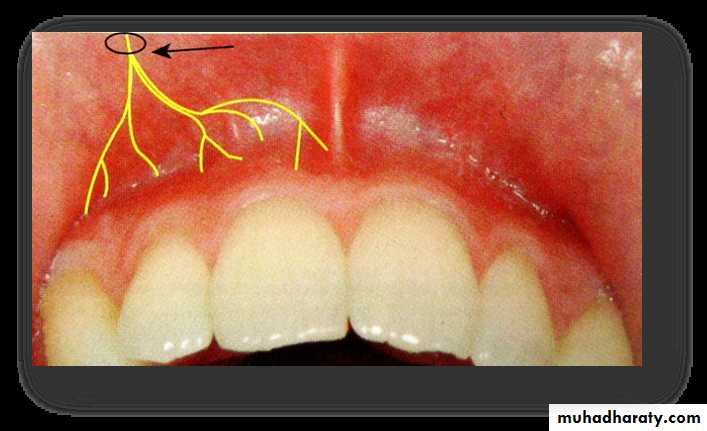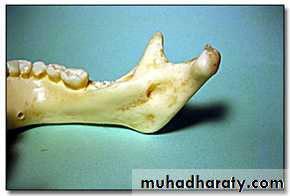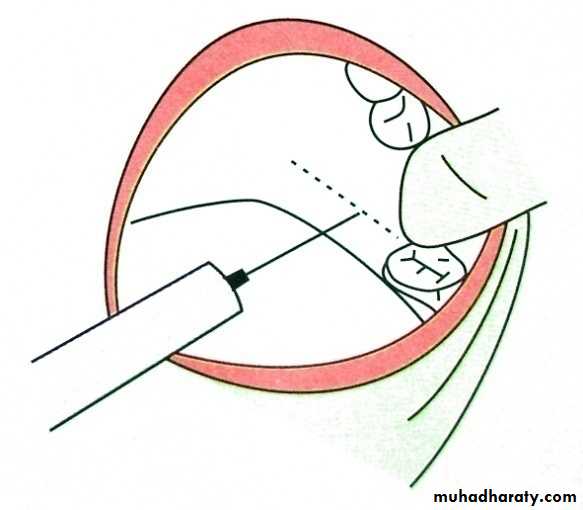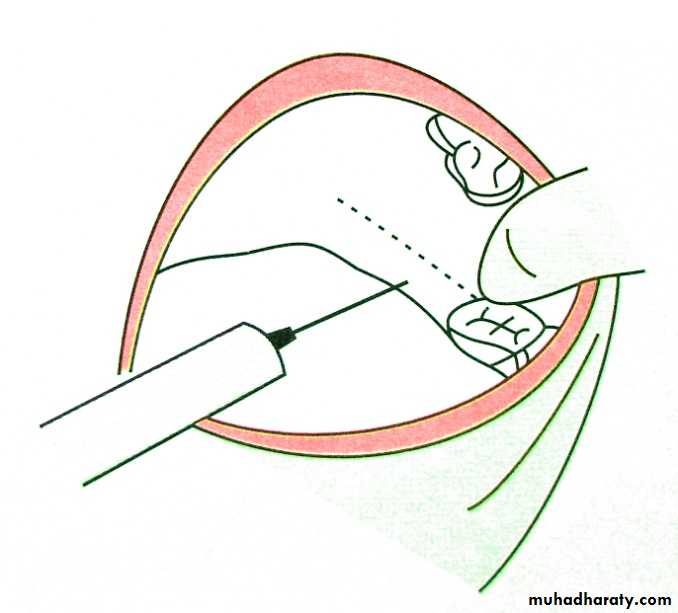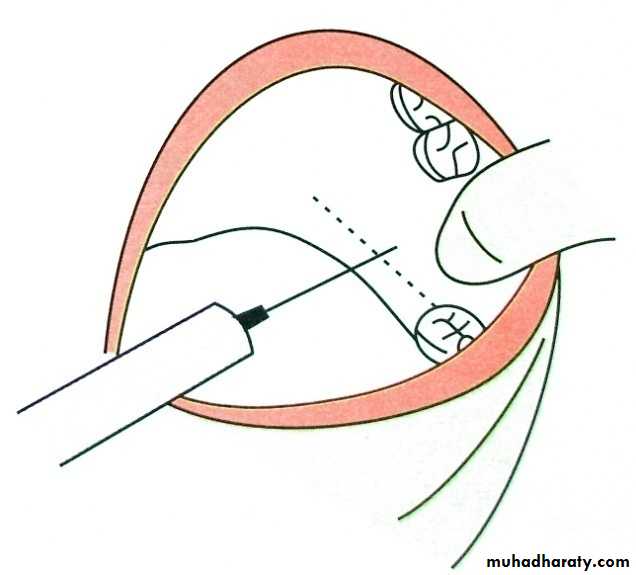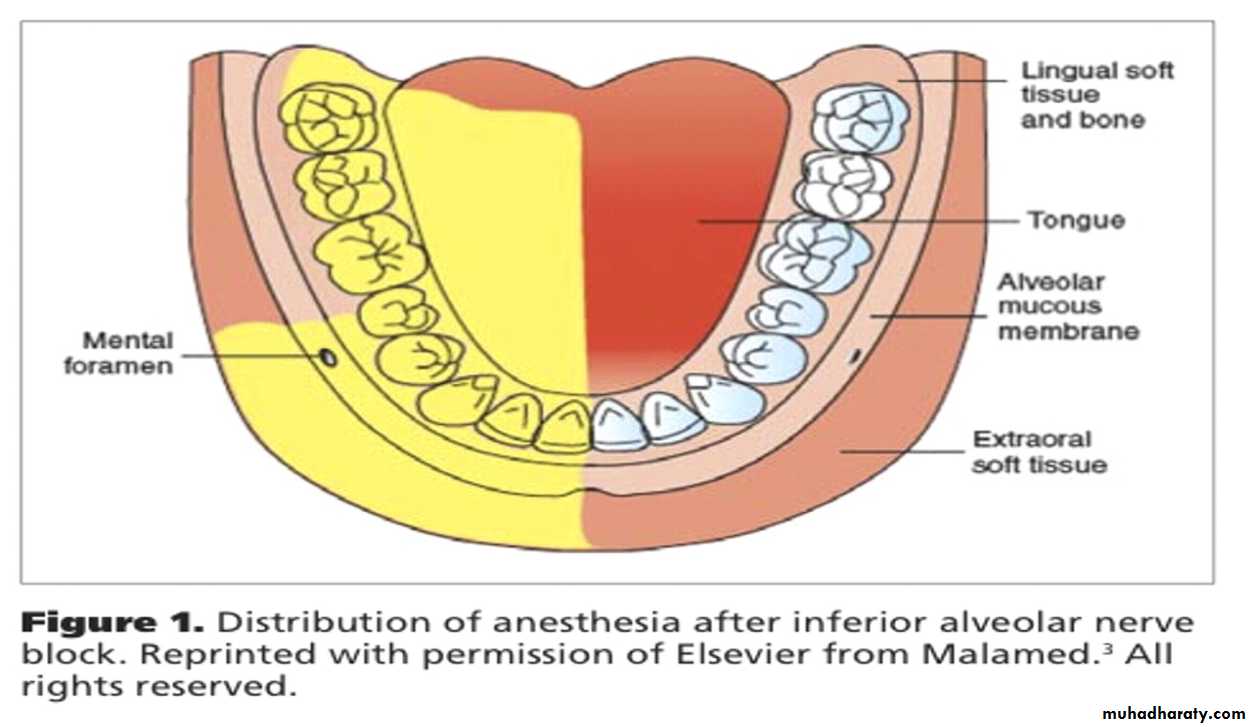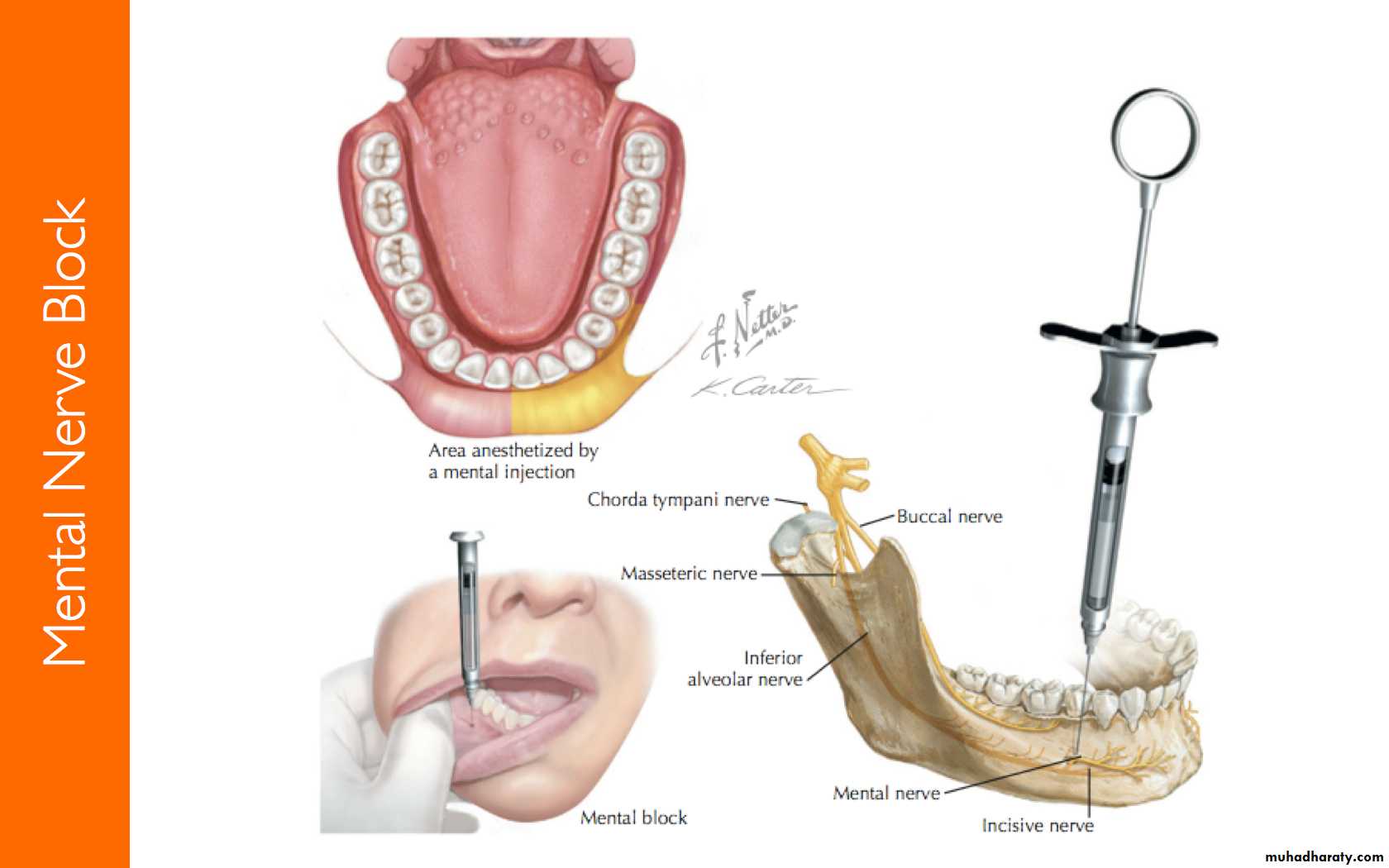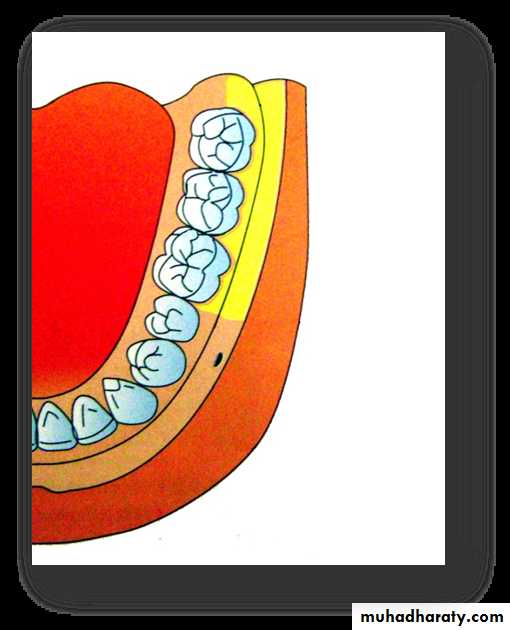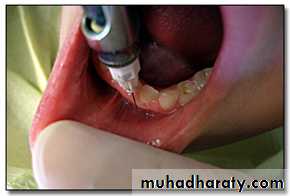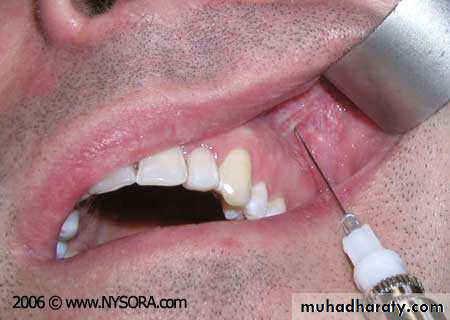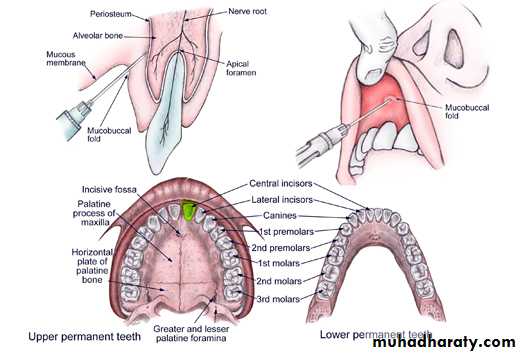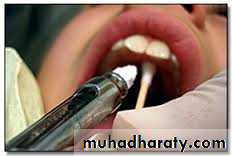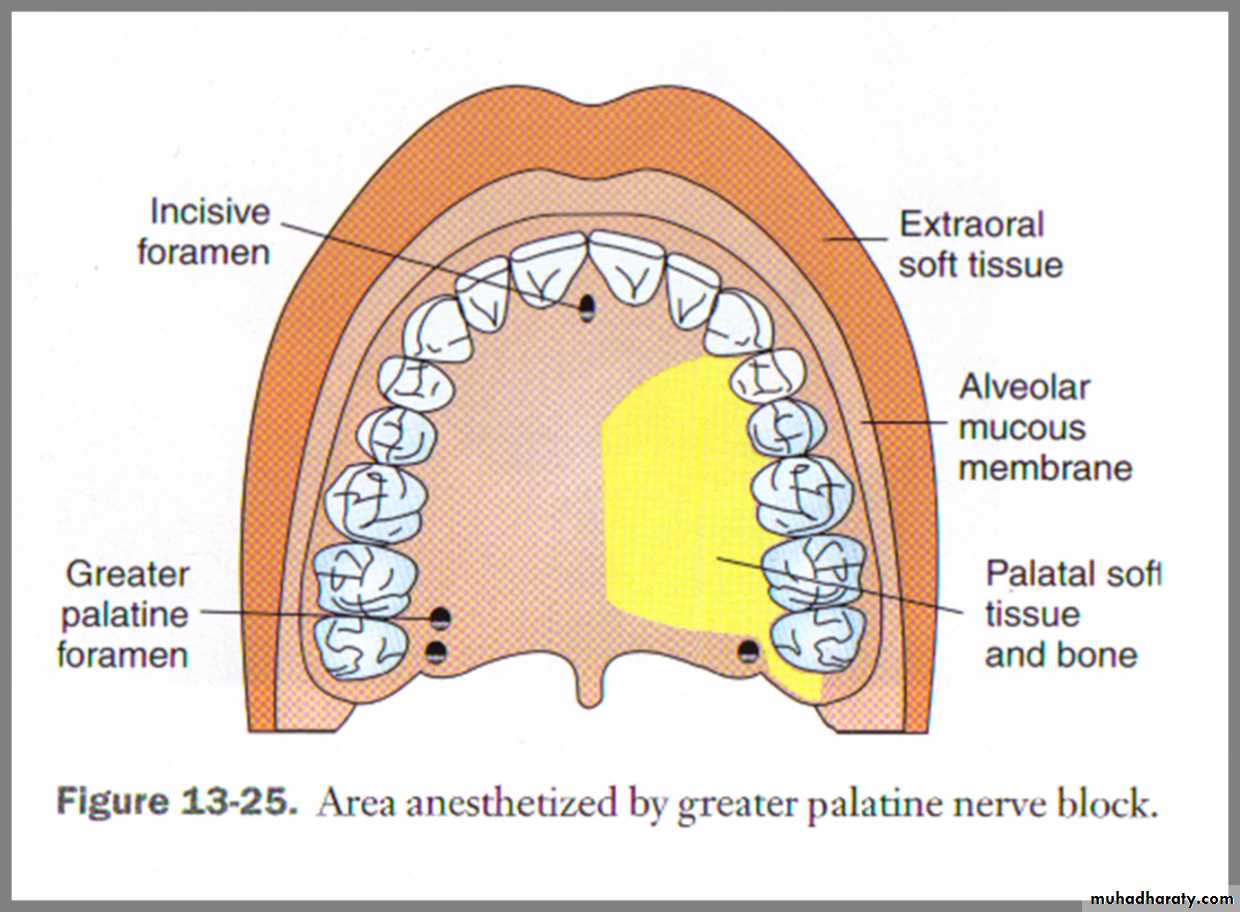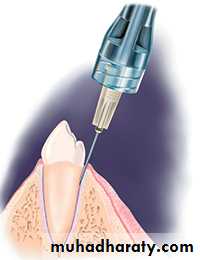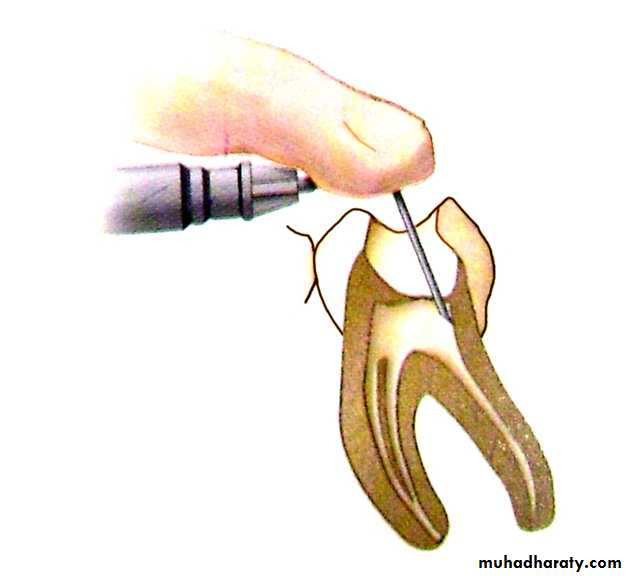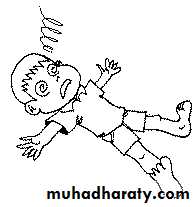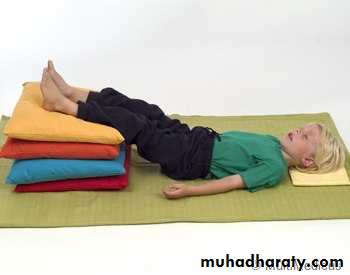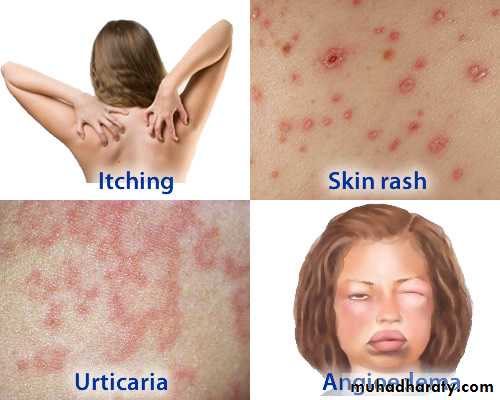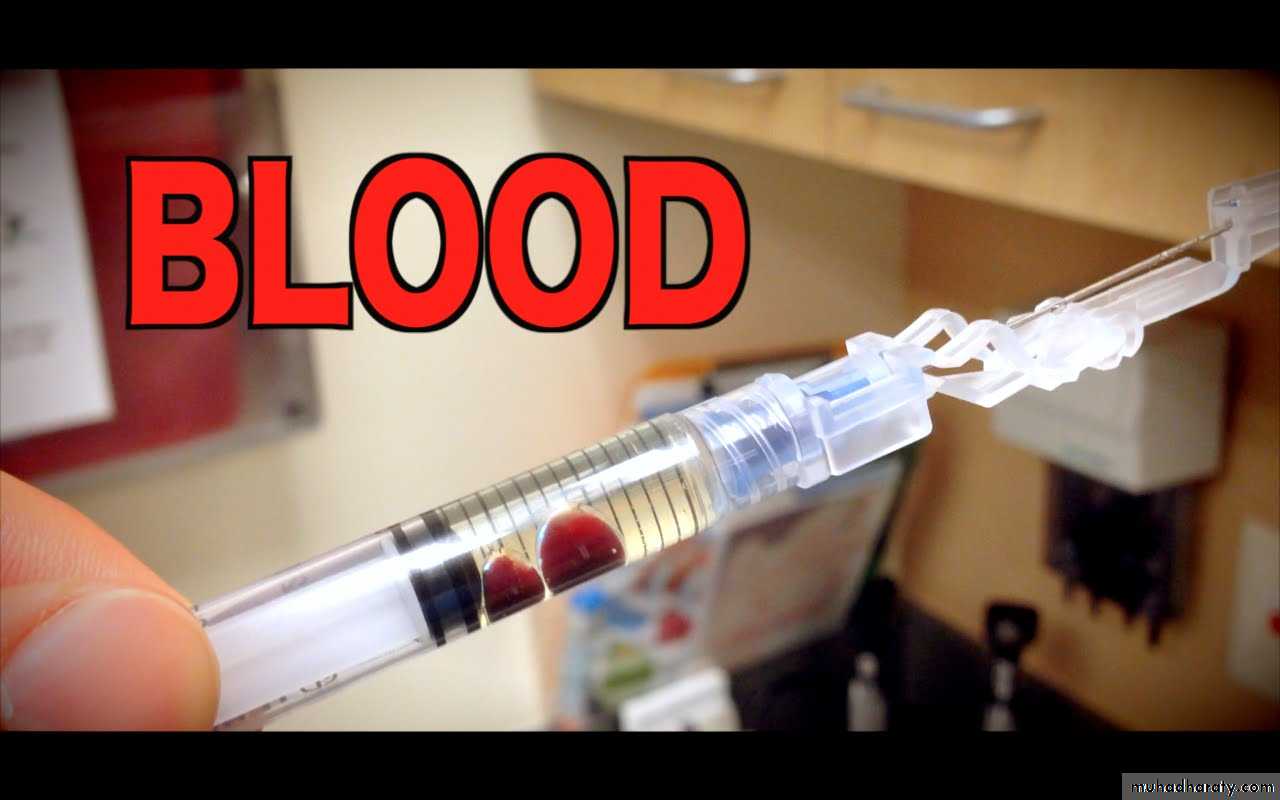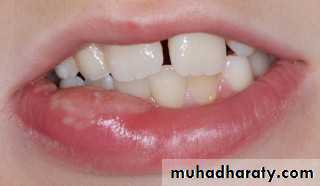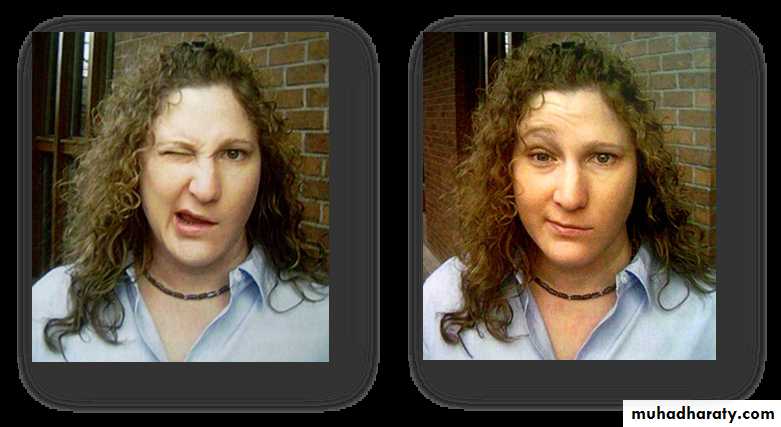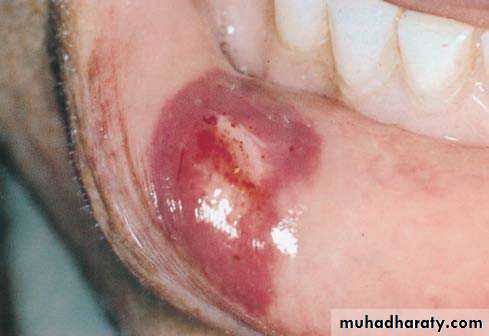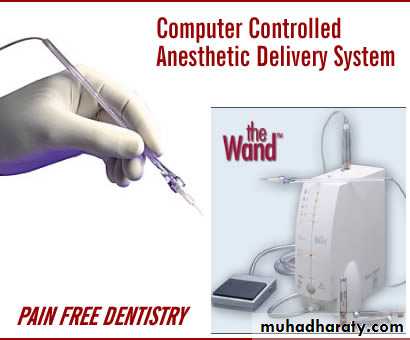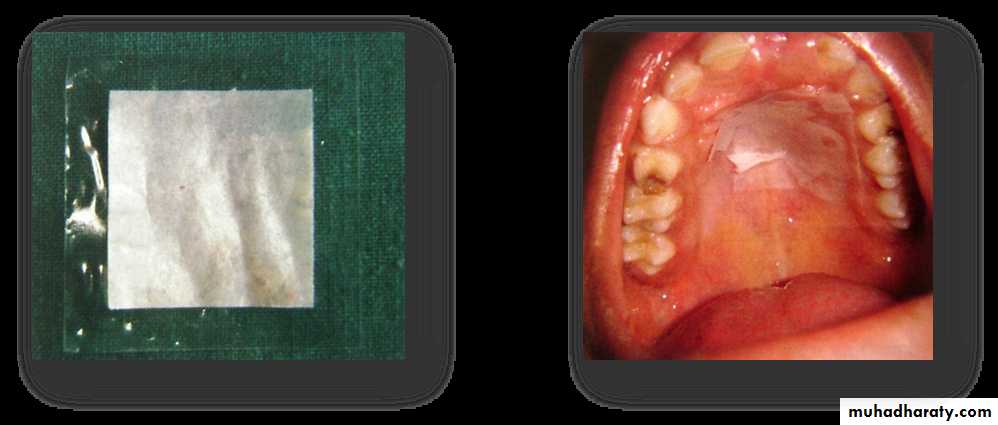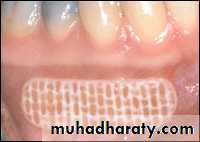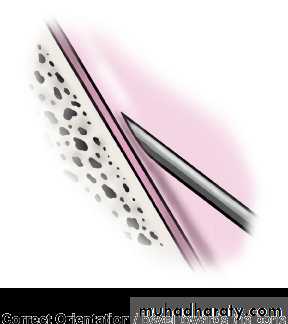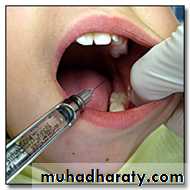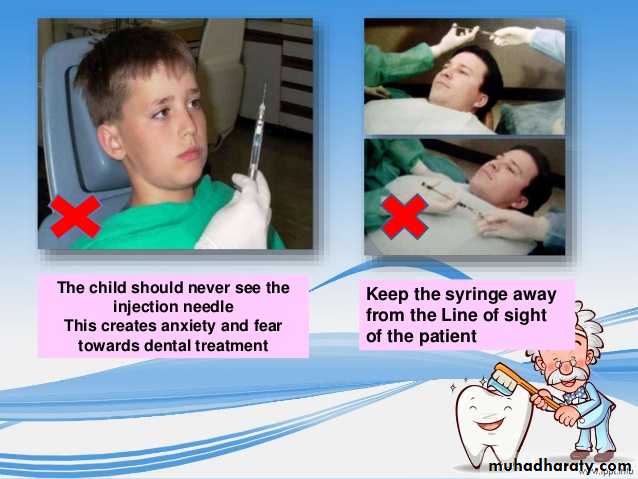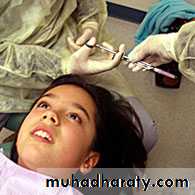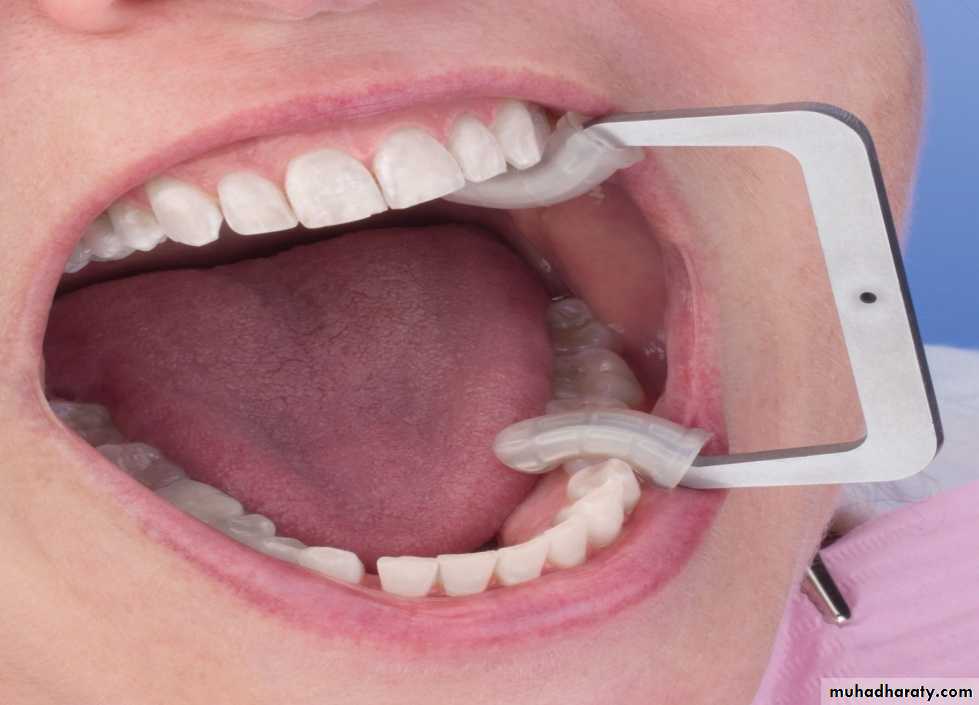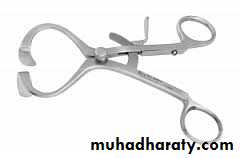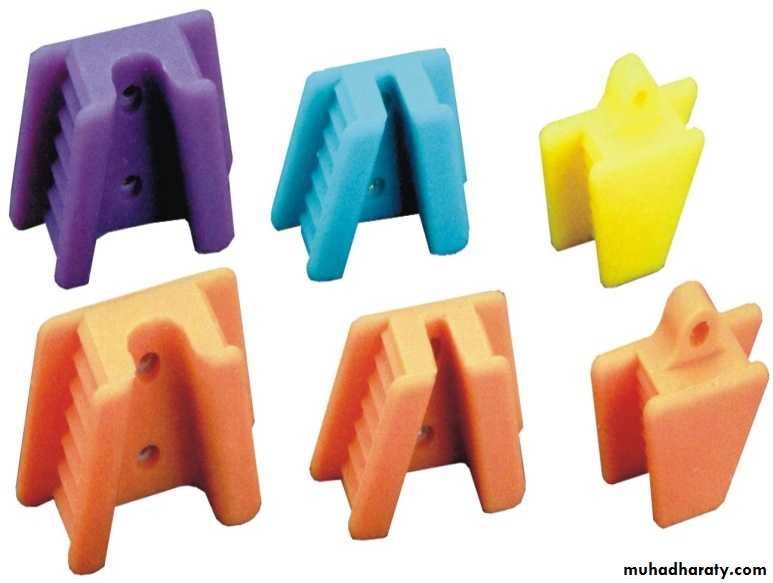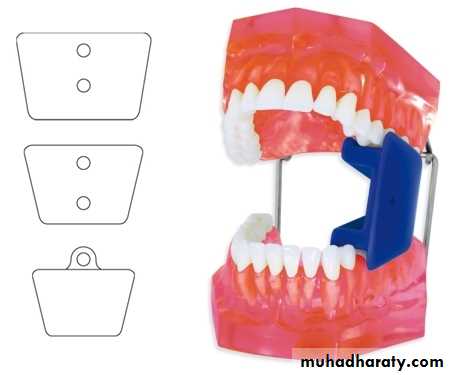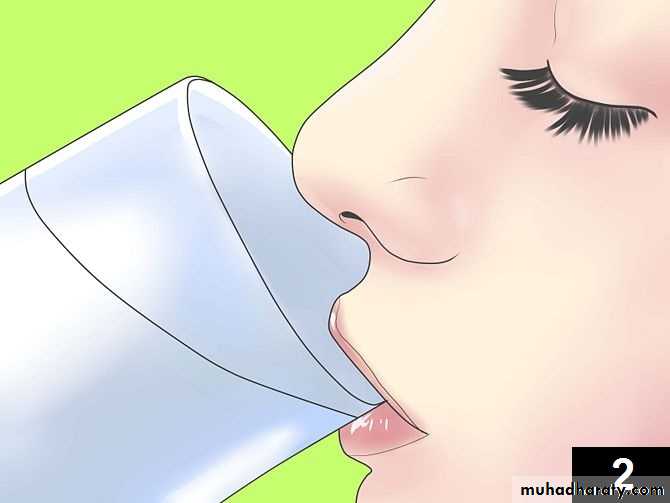Local Anesthesia in Pediatric
Dentistryأطفال \ خامس اسنان
د. حكم م(1)26\ 4\ 2017
1
557
Local Anesthesia:
Transient loss of sensation in a circumscribed area of the body caused by a depression of excitation in nerve endings or an inhibition of the conduction process in peripheral nerves.2
Topical Anesthesia
Available in different forms:• Gel ( most effective type).
• Liquid
• Spray.
• Technique:
• The mucosa at the site of the intended needle insertion is dried with gauze.
• A small amount of the topical anesthetic agent is applied to the tissue with a cotton swab.
• The dentist should prepare the child for the injection ( tell the patient : the tooth is going to sleep so that the treatment can proceed without discomfort).
• Give it enough time.
3
• Effective to a depth of 2-3 mm when used properly .
• Effective in reducing the discomfort of the initial penetration of the needle into the mucosa.• It’s disadvantages are the taste may be disagreeable to patient and the length of application time may increase apprehension in the pediatric patient.
Not known to produce systemic toxicity in adults but can produce local allergic reactions.
Necessity in topical anesthesia
1- Good tasting2- low toxicity.
3- Rapid onset.
4- Available in an easy form to control (gel)
4
Content of L.A. Solution:
• Local anesthetic agent.
• Vasoconstrictors.
• Reducing agents.
• Preservatives.
• Fungicide.
• Vehicle.
5
Reducing Agent
Sodium metabisulphite.Preservative
Methylparaben.It increases the shelf life of the anesthetic solution.
Acts as a bacteriostatic agent.
Fungicide
Thymol.Vehicle
Distilled Water to give volume.
6
Local anesthetic agent
EstersEsters of Benzoic Acid
Cocaine, Butacaine
Esters of Para Aminobenzoic Acid
Procaine, Chloroprocaine, propoxycaine
Amides
lidocaine, articaine, prilocaine7
Lidocaine hydrochloride (Xylocain) 2 % is most commonly used local anesthetic agent.
2% mean…….20mg in 1 ml
8
Vasoconstrictors
Adrenaline in the concentration of 1:50000 to 1:200000 is commonly used.1:200000 means….
1 gm in 200000 ml
Function of Vasoconstrictors:
• Delays absorption of LA from the site.• Provides blood less field.
• Prolongs the action .
• Reduces the systemic toxicity.
Contraindication: haypertension
9
Points to be Kept in Mined Regarding the Difference between Child and Adult Patient:
1.Density and calcification of maxillary and mandibular bone
in general bone is less calcified and less dense in child2.Anatomic structures.
4.Depth of needle penetration.
5.Emotional aspect.
10
Types of Injection Procedures:
1.Nerve block: depositing the LA solution within close proximity to a main nerve trunk.2.Field block: depositing in proximity to the larger nerve branches.
3.Local infiltration: small terminal nerve endings are anaesthetized.
11
Anesthesia of Mandibular Teeth and Soft Tissue:
• Inferior Alveolar Nerve Block + Lingual Nerve Block:• Ramus is shorter vertically and narrower anteroposteriorly .
• Mandibular foramen is lower than in adult
12
• Inferior Alveolar Nerve Block + Lingual Nerve Block:
• The mandibular foramen is situated at a level lower than the occlusal plane of the primary teeth of the pediatric patient.• The injection must be made slightly lower and more posteriorly than for an adult patient.
• Do not need to penetrate tissue as far as in adult.
BELOW 6 YEARS
6 – 12 YEARSABOVE 12 YEARS
13
Area anesthetized
Mandibular teeth of the injected side.Body of the mandible, inferior portion of the ramus.
Buccal mucoperiosteum, mucous membrane anterior to the mandibular 1st molar.
Anterior 2/3rd of tongue and floor of the mouth.
Lingual soft tissue and periosteum.
14
2) Mental Nerve Block ( Lower E & D filling)
15
3) Long Buccal Nerve Block
Site of injectionMucous membrane distal and buccal to the most distal molar tooth in the arch.
Area Anesthetized
Soft tissue and periosteum buccal to the mandibular molar teeth.16
4) Infiltration For Mandibular Incisors:
The labial bone overlying the mandibular incisors is usually thin enough for supraperiosteal anesthesia techniques to be effective.
17
Anesthesia of Maxillary Teeth and Soft Tissue:
• Supraperiostial Technique (Local Infiltration)Most frequently used for obtaining pulpal anesthesia in maxillary teeth.
Indicated whenever dental procedures are confined to only one or two teeth.
Apices of primary anterior teeth are at depth of
Mucobuccal fold
Pulling tissue taut makes
the procedure less painful
Landmark: insertion 45 to
Long acsses of the tooth18
Areas Anesthetized
• Pulp and root area of the tooth.• Buccal periosteum.
• Connective tissue.
• Mucous membrane.
19
4) Palatal Anesthesia:
a) Nasoplatine Nerve Block:Blocking the nasopalatine nerve anesthetizes the palatal tissues
of the six anterior teeth.This technique is painful. ( apply pressure to decrease pain).
20
b) Greater Palatine Nerve Block:
Anesthetizes the mucoperiosteum of the palate from the tuberosity to the canine region and from the median line to the gingival crest on the injected side.21
Supplemental Injection Technique:
1) Periodontal Ligament InjectionThe needle is placed in the gingival sulcus, and advanced along the root surface until resistance.
Then approximately 0.2 mL of anesthetic is deposited into the periodontal ligament.
Pressure is necessary ( by the injection) to express the anesthetic solution.
22
Advantages of Periodontal Ligament Anesthesia:
1. It provides reliable pain control rapidly and easily.2. It provides pulpal anesthesia for 30 to 45 minutes.
3. It is no more uncomfortable than other local anesthesia techniques.
4. It requires very small quantities of anesthetic solution.
5. It does not require aspiration before injection.
6. It may be performed without removal of the rubber dam.
7. It may be useful in patients with bleeding disorders that contraindicate use of other injections like haemophilia.
8. It may be useful in young or disabled patients in whom the possibility of postoperative trauma to the lips or tongue is a concern.
23
2)Intrapulpal Injection: ( not used for deciduous teeth)
Local anesthetic solution is delivered directly to the pulp using a bent needle.Advantages:
Requires minimum volumes of LA solutionImmediate onset of action
Very few post operative complications
24
Maximum Recommended Doses (Safety):
4.4 mg/kg body weight.
Dose Calculation:
2% lidocaine = 20 mg/ ml with 1:100,000 Epinephren1 carpule = 1.8ml
Amount of LA in 1 carpule = 20X 1.8 = 36mg/carpule.
Example:
20 Kg child can tolerate a maximum dose of 2% lidocaine with vasoconstrictor of LA ----------4.4 X 20= 88 mg = 88/36 = 2.4carpules.
25
How to calculate
maximum doseChild weight Х Maximum dose of L A
Amount of L A per carpule
Example child weight 10 Kg , what is the maximum safe dose of local anesthesia that we can give
26
Complications OF LA:
• Systemic Complications• Toxicity.
• Syncope.
• Allergic Reaction.
• Vasoconstrictors effects.
27
Manifestation Of Toxicity
Cardiac DepressionComa
Convulsions
Unconsciousness
Muscular twitching
Visual and auditory disturbances
They can be avoided by closely monitoring during the injection, injecting slowly and withdrawing the needle at first signs of an adverse response
Concentration of LA in Plasma
28
Syncope:
Most common cause : Vasovagal attachSigns and Symptoms:
• Child become pale and cold .• Pulse is rapid.
• The pupils are dilated or constricted.
• Drop of blood pressure.
29
Allergic Reaction:
• Uncommon.• Manifestations: edema, eczema .skin rash .itching ……
• Anaphylactic shock : more sever form of allergy >> Med. Emergency.
• Tx: .1-.5 ml of 1:1000 epinephrine injection >> the base of the tongue.
•
30
Vasoconstrictors Effects:
Patients with ischemic heart diseases and hypertension are at high risk of toxicity if LA administrated intravascularly.Don’t forget aspiration
Before injection31
2) Local Complications:
Broken needle.(due to sudden movement during administration)Hematoma and scar formation (due to repeat insertion in the same area).
Facial nerve gets temporarily paralyzed.
Trauma of the nerve causing Paresthesia.
Blanching due to Vasoconstrictor.
Soft tissue injury or trauma to soft tissue .
32
3) Post Anesthesia Trauma:
Remind both parent and child that area will remain numb after the appointment.Caution that child should not to chew or bite at area.
Sometimes placing a cotton roll between the teeth will help remind patient not to chew.
33
Computer Controlled Anesthesia Delivery System (WAND) :
Administers local anesthetic at two specific rates of delivery.The slow rate is 0.5ml/min
andfast rate is 1.8ml/min .
34
Intraoral lidocaine patch (Topical Anesthesia)
Contains 10% or 20% lidocaine.Placed for 15 minutes on the buccal mucosa of the maxillary or mandibular premolar area, 2 mm apical to the mucogingival junction.
35
Principles of Atraumatic Injection:
• Lock confident and smile.• Don’t let the parents take charge.
• Use Anesthetic cartilage and siring at
temperature close to room temperature.
• Proper positioning for the patient and doctor.
• Apply topical anesthesia.
• Always communicate with the patient.
• Keep syringe out of patient site.
• Don’t inject subperiosteally.
• Always aspirate.
• Slowly deposit LA solution.
• Bevel of the needle facing the bone.
• Never leave patient unattended assistant
• Assistance can help bloch view and keep patient distracted.
•
36
37
Mouth props
Help child keep his mouthSufficiently open.
Placed on the posterior teeth .
38
Immediate post injection instruction
The child should be instructed to rinse his mouth immediatallyPatient can’t cry.
Minimize the bitter taste.
39




